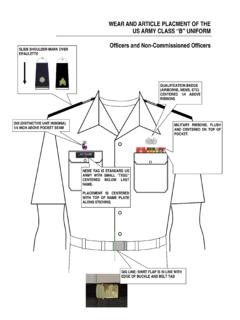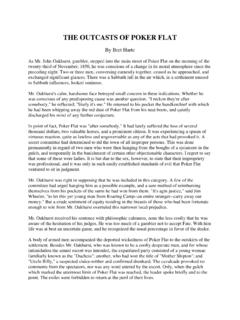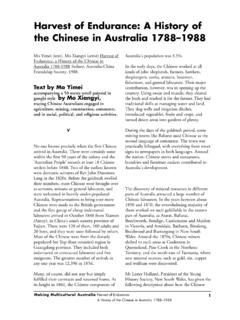Transcription of The color wheel is a visual representation of color theory
1 color theory Basics What is color theory ? color theory is a set of principles used to create harmonious color combinations. color relationships can be visually represented with a color wheel the color spectrum wrapped onto a circle. The color wheel is a visual representation of color theory : According to color theory , harmonious color combinations use any two colors opposite each other on the color wheel , any three colors equally spaced around the color wheel forming a triangle, or any four colors forming a rectangle (actually, two pairs of colors opposite each other). The harmonious color combinations are called color schemes sometimes the term ' color harmonies' is also used.
2 color schemes remain harmonious regardless of the rotation angle. Classic color schemes supported by color wheel Pro: Monochromatic color Scheme The monochromatic color scheme uses variations in lightness and saturation of a single color . This scheme looks clean and elegant. Monochromatic colors go well together, producing a soothing effect. The monochromatic scheme is very easy on the eyes, especially with blue or green hues. Analogous color Scheme The analogous color scheme uses colors that are adjacent to each other on the color wheel . One color is used as a dominant color while others are used to enrich the scheme.
3 The analogous scheme is similar to the monochromatic, but offers more nuances. Complementary color Scheme The complementary color scheme consists of two colors that are opposite each other on the color wheel . This scheme looks best when you put a warm color against a cool color , for example, red versus green-blue. This scheme is intrinsically high-contrast. color theory does not analyze tints, shades, and tones color theory analyzes only the relationships of pure colors, it does not take color lightness and saturation into account. While your color scheme can use any tints, shades, and tones, color theory pays attention only to the hue component.
4 color theory considers both these schemes equal: History of color theory The first color wheel was invented by Sir Isaac Newton. He split white sunlight into red, orange, yellow, green, cyan, and blue beams; then he joined the two ends of the color spectrum together to show the natural progression of colors. Split Complementary color Scheme The split complementary scheme is a variation of the standard complementary scheme. It uses a color and the two colors adjacent to its complementary. This provides high contrast without the strong tension of the complementary scheme. Triadic color Scheme The triadic color schemeuses three colors equally spaced around the color wheel .
5 This scheme is popular among artists because it offers strong visual contrast while retaining harmony and color richness. The triadic scheme is not as contrasting as the complementary scheme, but it looks more balanced and harmonious. Tetradic (Double Complementary) color Scheme The tetradic (double complementary) scheme is the most varied because it uses two complementary color pairs. This scheme is hard to harmonize; if all four hues are used in equal amounts, the scheme may look unbalanced, so you should choose a color to be dominant or subdue the colors. Newton associated each color with a note of a musical scale.
6 A century after Newton, Johann Wolfgang Goethe began studying psychological effect of colors. He noticed that blue gives a feeling of coolness and yellow has a warming effect. Goethe created a color wheel showing the psychological effect of each color . He divided all the colors into two groups - the plus side (from red through orange to yellow) and the minus side (from green through violet to blue). Colors of the plus side produce excitement and cheerfulness. Colors of the minus side are associated with weakness and unsettled feelings. The current form of color theory was developed by Johannes Itten, a Swiss color and art theorist who was teaching at the School of Applied Arts in Weimar, Germany.
7 This school is also known as 'Bauhaus'. Johannes Itten developed ' color chords' and modified the color wheel . Itten's color wheel is based on red, yellow, and blue colors as the primary triad and includes twelve hues. Related topics: Mixing vs. visual color wheel color Schemes color Meaning Mixing vs. visual color wheel Mixing (red-yellow-blue) color wheel Traditionally, artists used a color wheel composed of the primary colors red, yellow, and blue. Currently, the mixing color wheel is commonly accepted as a visual representation of color theory . This color wheel was invented by Johannes Itten, a Swiss color and art theorist.
8 According to Itten, the primary use of his color wheel is for mixing pigments. However, many artists use this color wheel to create visually harmonious color combinations. visual (red-green-blue) color wheel Copyright 2002-2003 QSX Software Group. All rights reserved. color wheel Pro contains Macromedia Flash Player software by Macromedia, Inc., Copyright 1995-2003 Macromedia, Inc. All rights reserved. Macromedia and Flash are trademarks of Macromedia, Inc. As opposed to the mixing version of the color wheel , the visual color wheel is based on the primary colors red, green, and blue. The RGB primaries are used for computer monitors, cameras, scanners, etc.
9 The secondary (subtractive) triad of the RGB wheel is CMY (cyan, magenta, yellow), which is a standard in printing. Also, the human eye contains RGB receptors. Because of this fact, many artists believe that the visual RGB color wheel should be used instead of the traditional RYB wheel to create visual complements. Which wheel to choose? The purpose of color wheel Pro is to create visually harmonious color schemes, but not to teach you to mix pigments. So we recommend that you use the visual RGB wheel because it reflects human color perception correctly. Of course, you can experiment with both types of the color wheel .
10 color Meaning Red Red is the color of fire and blood, so it is associated with energy, war, danger, strength, power, determination as well as passion, desire, and love. Red is a very emotionally intense color . It enhances human metabolism, increases respiration rate, and raises blood pressure. It has very high visibility, which is why stop signs, stoplights, and fire equipment are usually painted red. In heraldry, red is used to indicate courage. It is a color found in many national flags. Red brings text and images to the foreground. Use it as an accent color to stimulate people to make quick decisions; it is a perfect color for 'Buy Now' or 'Click Here' buttons on Internet banners and websites.









